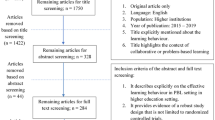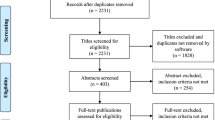Abstract
This study’s objective was to explore preclinical medical students’ consideration of psychosocial variables in problem-based learning (PBL) cases. The authors used PBL cases that included psychosocial data and case content focused on behavioral science, biological science, or a combination of both. The authors compared, using one-way analysis of variance, the mean number of cues, learning issues, and hypotheses that the students generated in their written responses to PBL cases that varied in the amount of psychosocial content. The results revealed that the students identified psychosocial cues consistently across all curriculum segments, but the mean numbers of psychosocial hypotheses and learning issues were highest in the PBL case units dominated by psychosocial material. The authors conclude that the recognition of psychosocial data as germane disease variables is achieved more easily than the use of such data in a biopsychosocial formulation of traditional medical problems. A lack of sophistication and experience might make the latter task difficult to accomplish for many second-year medical students without using specific educational strategies.
Similar content being viewed by others
References
Barrows HS, Tamblyn R: Problem-Based Learning: An Approach to Medical Education. New York, Springer, 1980
Gordon DR: Tenacious assumptions in western medicine, in Biomedidne Reexamined, edited by Lock M, Gordon D. Dordrecht, The Netherlands, Kluwer Academic, 1988
Lock M, Leila J: Reforming medical education, in Toward a Broadening of Attitudes in Illness Behavior: A Multidisciplinary Model, edited by McHugh S, Valus TM. New York, Plenum, 1986
Engel GL: The need for a new medical model: a challenge for biomedidne. Sdence 1977; 196:129–136
Werner A: Coming to grips with the psychosodal. Br J Psychiatry 1983:142:333–339
Ways PO, Loftus L, Jones J: Focal problem teaching in medical education. Journal of Medical Education 1973; 48:565–571
Werner EA, Mullan PB, Richmond Y: Patient diversity in problem-based learning cases. Paper presented at the Triennial McMaster Conference on Problem-Based Learning, Hamilton, Ontario, Canada, June 30, 1994
Author information
Authors and Affiliations
Corresponding author
Rights and permissions
About this article
Cite this article
Werner, A., Werner, E.A. & Mullan, P.B. Teaching Students to Identify Psychosocial Cues in Problem-Based Learning Cases. Acad Psychiatry 21, 86–90 (1997). https://doi.org/10.1007/BF03341903
Published:
Issue Date:
DOI: https://doi.org/10.1007/BF03341903




